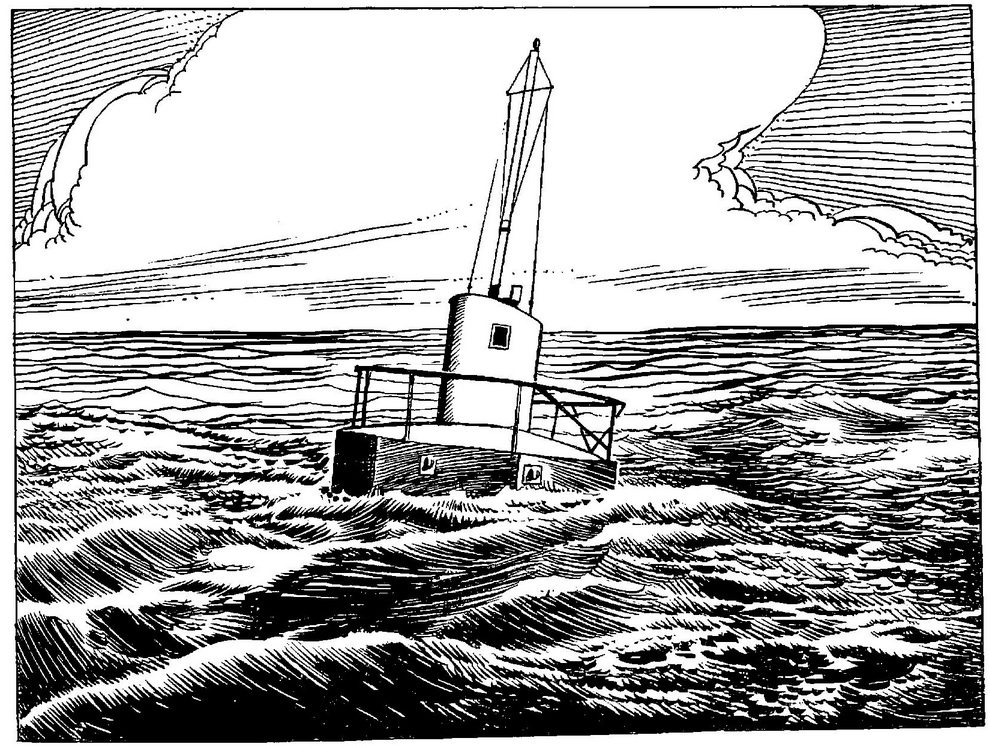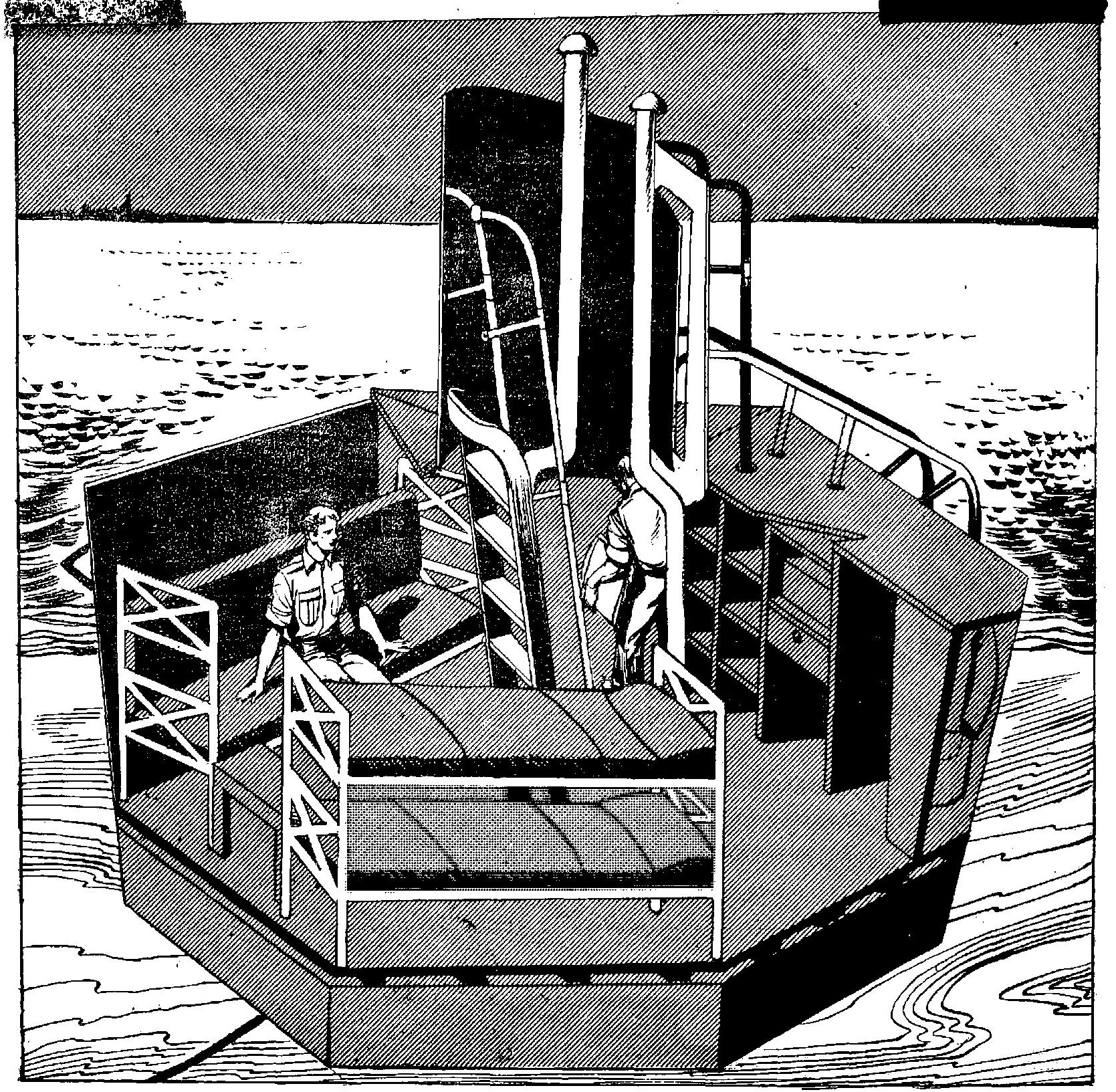Rescue Buoy (Luftwaffe) on:
[Wikipedia]
[Google]
[Amazon]

 The
The

 The
The Luftwaffe
The ''Luftwaffe'' () was the aerial-warfare branch of the German ''Wehrmacht'' before and during World War II. Germany's military air arms during World War I, the ''Luftstreitkräfte'' of the Imperial Army and the '' Marine-Fliegerabtei ...
's rescue buoy (''Rettungsboje'') was designed to provide shelter for the pilots or crew of aircraft shot down or forced to make an emergency landing over water.
History
The buoys were developed for flyers of the Luftwaffe brought down while operating over theEnglish Channel
The English Channel, "The Sleeve"; nrf, la Maunche, "The Sleeve" (Cotentinais) or ( Jèrriais), (Guernésiais), "The Channel"; br, Mor Breizh, "Sea of Brittany"; cy, Môr Udd, "Lord's Sea"; kw, Mor Bretannek, "British Sea"; nl, Het Kana ...
, and were constructed under the direction of the German Ministry of Air Navigation in 1940 at the suggestion of Generaloberst Ernst Udet, Director-General of Equipment for the Luftwaffe. Because of this, an alternate name for them was the ''Udet-Boje''.
The initial buoys were a simple design, 2m high, and 1m x 5m in size, offering little in the form of shelter. A flag pole allowed a flag or lamp to be hoisted, supplies included a basic medical kit, iron rations, water, life jackets and ropes.
An improved buoy was designed and 50 were anchored in the English Channel during 1940.
Design of improved buoy
The buoys were of square or hexagonal construction and had a floor space of about 4m² (43 square feet) with an 2.4m (8 feet) tall cabin rising above the float. On the upper deck of this cabin, there was an oval turret 1.8m (6 feet) high with a signal mast carrying a wireless antenna. Tube railings to which the distressed flyers could cling ran along the outer circumference below and above the water line. A ladder led up to the turret, in which there was a door opening into the cabin below. A 100m (320 feet) red and yellow striped rope anchored the buoy at a fixed location, but allowed a limited drift, thereby indicating the direction of the current to aircraft in distress. The buoy was painted light yellow above the water line, and red crosses against white oval backgrounds were painted on each side of the turret. The cabin accommodated four persons comfortably for several days, and in an emergency, the crews of several aircraft could be taken care of. It was electrically lit by storage batteries, but in case of a breakdown kerosene lamps or other lighting devices were provided. There were two double-deck beds and adequate cupboard space for first-aid equipment, dry clothing and shoes, emergency rations, and a water supply. Hot food could be prepared on an alcohol stove. Cognac to relieve chill and cigarettes to quiet the nerves were also provided. Games, stationery, playing cards, etc. afforded diversion until rescue was effected. Depleted supplies were always immediately replaced upon the arrival of the rescue ship. A tubular lifeboat was available for transferring the downed aviators from the buoy to the ship. Signalling was accomplished by hoisting a black anchor ball and a yellow and red striped flag on the mast during the day. At night, red and white lights in the turret indicated that rescued men were on board. A white anchor light on the mast was visible for 1km (3,000 feet) or more. SOS signals giving the location of the buoy were automatically sent out by an emergency wireless transmitter. Signal pistols with red and white lights, white-light parachute flares, or a smoke, distress-signalling apparatus completed the signalling equipment. Other equipment included plugs to stop up bullet holes in the walls of the cabin and a pump for the expulsion of seepage.
Rescue
Being in fixed locations, they could be checked once or twice a day: if occupied, a seaplane or ''Flugsicherungboot'' (high speed launch) could be summoned. They saved many airmen that ships or seaplanes might have been too late to rescue.British equivalent
A British equivalent, the Air-Sea Rescue Float was also developed and deployed. They used a boat-shaped hull of welded steel. Sixteen were constructed, and they were deployed under the main routes bombers took to and from continental Europe. They were equipped with cooking facilities, signal flags, a radio and six bunks. Food, blankets, clothing, drinking water and first-aid supplies were carried. One example - ''ASR-10'' is in the collection of theScottish Maritime Museum
The Scottish Maritime Museum is an industrial museum with a Collection Recognised as Nationally Significant to Scotland. It is located at two sites in the West of Scotland in Irvine and Dumbarton, with a focus on Scotland's shipbuilding heritage ...
. During the war, it was deployed in the English Channel at Dover. In the 1950s it was converted into a yacht but it has since been restored to its original configuration.
Defence usage
A rescue buoy was incorporated into the harbour boom atBraye Harbour
Braye Harbour (also known as Alderney Harbour) is the main harbour on the north side of the island of Alderney, in the Channel Islands, a dependency of the British Crown. A breakwater was built by the Admiralty to protect the Navy in the 19t ...
in German-occupied Alderney, reputedly manned by three men armed with a machine gun.
In film
''Rettungsbojen'' have appeared in films from the World War II period: ''One of Our Aircraft Is Missing
''One of Our Aircraft Is Missing'' (stylized onscreen as ''......one of our aircraft is missing'') is a 1942 British black-and-white war film, mainly set in the German-occupied Netherlands. It was the fourth collaboration between the British writ ...
'' (1942) and ''We Dive at Dawn
''We Dive at Dawn'' is a 1943 war film directed by Anthony Asquith and starring John Mills and Eric Portman as Royal Navy submariners in the Second World War. It was written by Val Valentine and J. B. Williams with uncredited assistance from Fr ...
'' (1943).
References
{{Reflist Luftwaffe Air force history Aviation history of Germany Buoyage